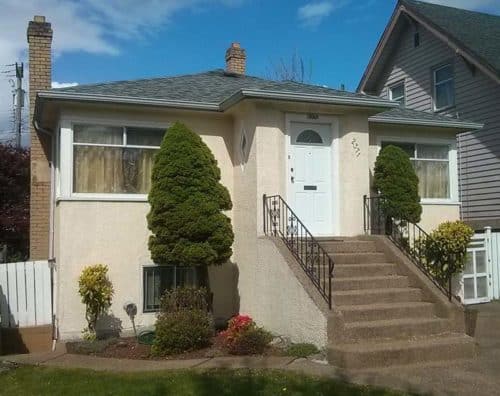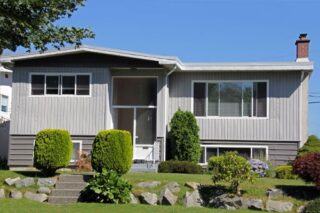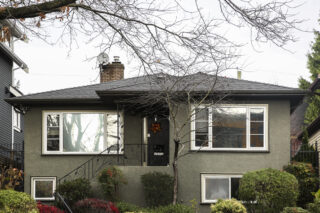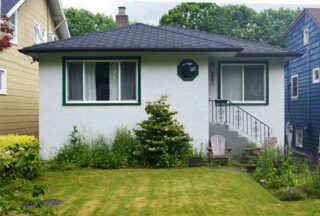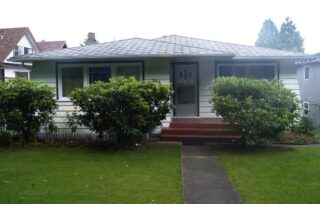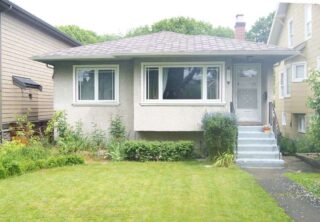The partially sunken basement level often has wide lapped siding with a stuccoed main floor and wide lapped siding sometimes appearing in the open gable above front roofline. Roofs are usually asphalt, and chimneys brick masonry. Windows and doors have minimal wood trim. Shutters are not operational and used only to bracket oversized windows.
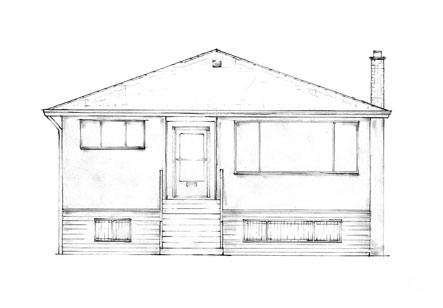
Click on the diagram or expand the term index to learn more about the features.
Front Stairs
Bridging the porch and street, the front stairs provide easy access to the home through the use of treads and risers. Staircases are found in a number of configurations on the façade in response to accessibility and style.
Hipped Roof
A hip (or hipped) roof slopes down to the eaves on all four sides. Although a hip roof has no gable ends, it may have dormers or connecting wings with gables. When the building is square, the hip roof is pointed at the top like a pyramid. When the building is rectangular, the hipped roof forms a ridge at the top.
Lap Siding
Beveled siding which overlaps on an angle and is wider and longer than Clapboard.
Picture Window
A large horizontal single light window placed on the front wall of the living room.
Screen Door
Consisting of a framed netting that allows for ventilation and prevents bugs from entering the home.
Form
The vernacular house of baby-boomers’ parents, the Mid-Century Builder is a boxy cottage with a hipped roof and no porch, with the main floor set almost a storey above grade and a basement level illuminated by fairly large windows. It has a concrete flight of stairs ascending to a front door usually sheltered by a small hipped roof. The main floor often has a large picture window on the living room side and a smaller window on the bedroom side. Cladding is usually stucco, with levels distinguished by different colours of glass-dashed (“beer bottle”) or pebble-dashed stucco, although a common form has wide lap siding below the bellyband and stucco above (the strawberry box). Octagon or diamond-shaped windows provide highlights.
Background
The Mid-Century Builder emerged after WWII to provide inexpensive housing for returning soldiers and their families. These homes are common in suburban areas but can be found anywhere. As communities sprawled in the 1950s and 1960s, housing had to be built fast to accommodate them. Function rather than style was its defining feature. Simple forms and inexpensive materials characterized the style. Sometimes this style was called the ‘Strawberry box’ due to the similarity of its square foundation with the boxes used to hold strawberries. In Vancouver, the Mid-Century Builder is seen in many neighbourhoods of the city.
Details
- Hipped roof
- 1 ½ stories
- Boxy shape
- No porch
- Main floor a storey above grade
- Basement with large windows
- Concrete flight of stairs to front door
- Stucco siding
